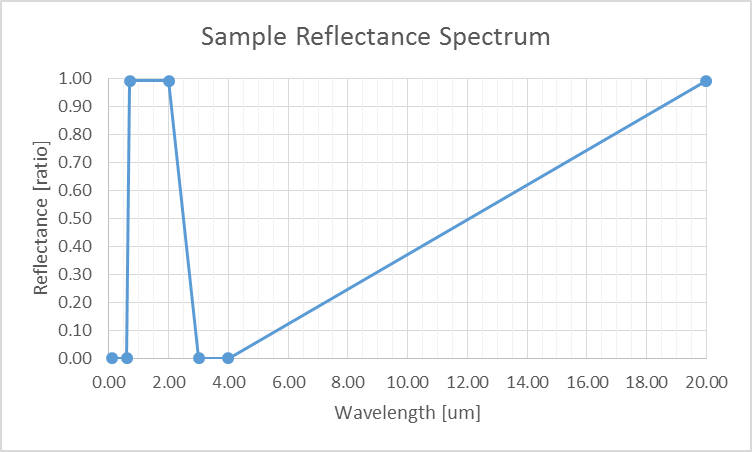Enables you to specify a spectral vector for applications such as defining the spectral reflectance of an object in EOIR. Each pair of numbers is a spectral wavelength sample and an associated response value for that sample on a single line separated by a tab. The response between samples will be linearly interpolated so any high frequency changes must be sufficiently sampled to be captured in EOIR simulations. Lines with a leading hash mark will be skipped to allow internal documentation or notes.
| Parameter | Units | Description |
|---|---|---|
| Wavelength | [um] | The wavelength sample in microns. |
| Response | [application dependent] | The response is application dependent, for reflectance spectra for example the units are percentages. |
Sample File Format
# Sample reflectance spectral response function # Wavelength [um] Reflectance Value [ratio] 0.10 0.00 0.60 0.00 0.70 0.99 2.00 0.99 3.00 0.00 4.00 0.00 20.00 0.99
Here is an example of a simple reflectance function that is useful for testing. It quickly ramps on then off again from 0.6 to 3.0 microns, and then gradually increases from 4.0 to 20.0 microns. This is not a realistic pattern for a real-world material, but provides an example of what is possible. Reading a real sampled material reflectance spectrum and exporting it into this tab-separated format would most likely include hundreds of sample points.

If a value is requested outside the available spectral range, the nearest spectral response value is used so that the first and last values will be kept constant outside the wavelength bounds.